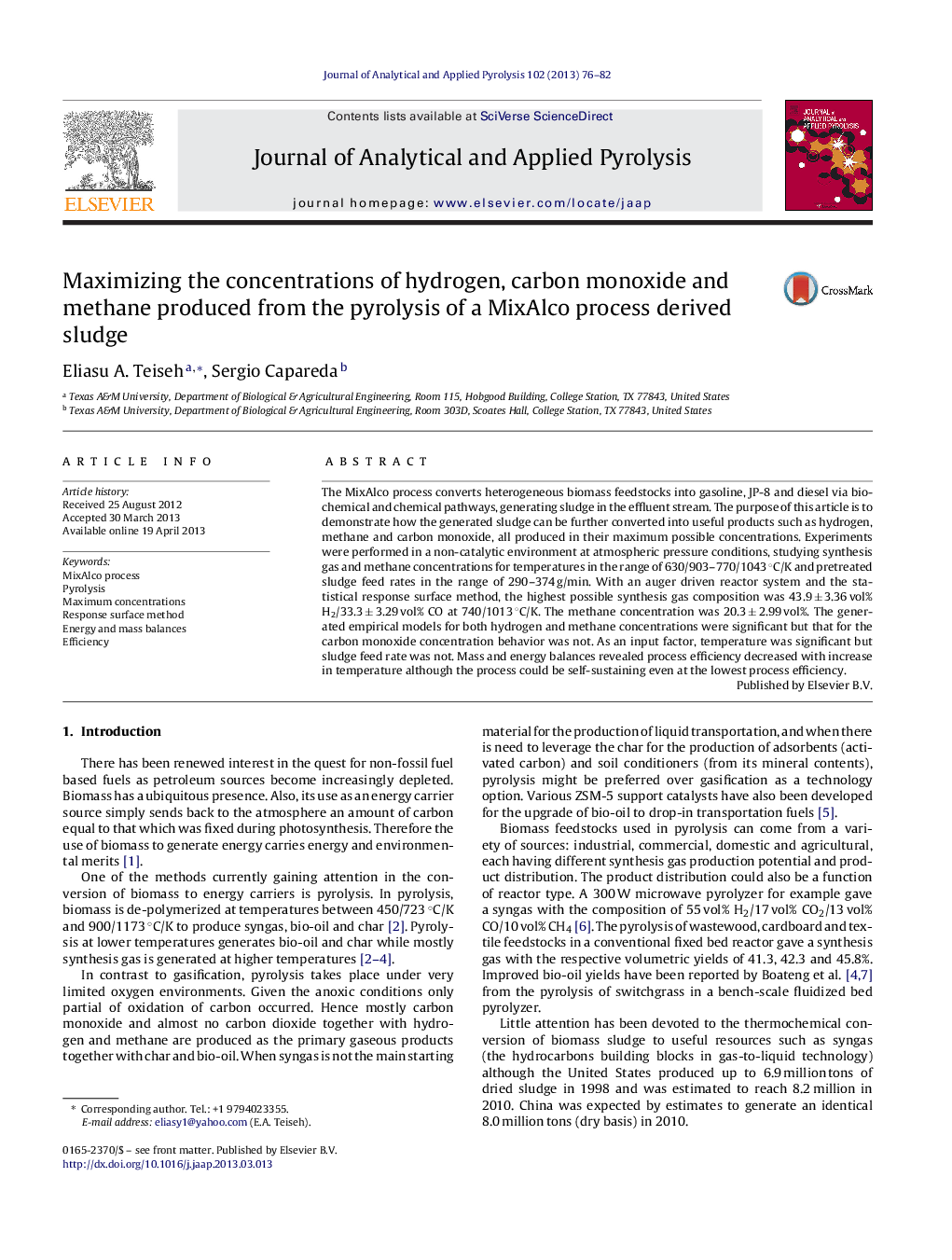| Article ID | Journal | Published Year | Pages | File Type |
|---|---|---|---|---|
| 1196890 | Journal of Analytical and Applied Pyrolysis | 2013 | 7 Pages |
•MixAlco residual sludge was pyrolyzed in an auger reactor, at temperatures between 630 and 770 °C and sludge feed rates of 16.8–22.5 kg/h.•At 740 °C, H2, CO and CH4 were produced at optimum average concentrations of 43.9, 33.3 and 20.3 vol%, respectively.•A statistical analysis demonstrated a major effect of temperature on product gases.•The overall efficiency decreased with increasing temperature, but the process was energy neutral even at its lowest efficiency.
The MixAlco process converts heterogeneous biomass feedstocks into gasoline, JP-8 and diesel via biochemical and chemical pathways, generating sludge in the effluent stream. The purpose of this article is to demonstrate how the generated sludge can be further converted into useful products such as hydrogen, methane and carbon monoxide, all produced in their maximum possible concentrations. Experiments were performed in a non-catalytic environment at atmospheric pressure conditions, studying synthesis gas and methane concentrations for temperatures in the range of 630/903–770/1043 °C/K and pretreated sludge feed rates in the range of 290–374 g/min. With an auger driven reactor system and the statistical response surface method, the highest possible synthesis gas composition was 43.9 ± 3.36 vol% H2/33.3 ± 3.29 vol% CO at 740/1013 °C/K. The methane concentration was 20.3 ± 2.99 vol%. The generated empirical models for both hydrogen and methane concentrations were significant but that for the carbon monoxide concentration behavior was not. As an input factor, temperature was significant but sludge feed rate was not. Mass and energy balances revealed process efficiency decreased with increase in temperature although the process could be self-sustaining even at the lowest process efficiency.
